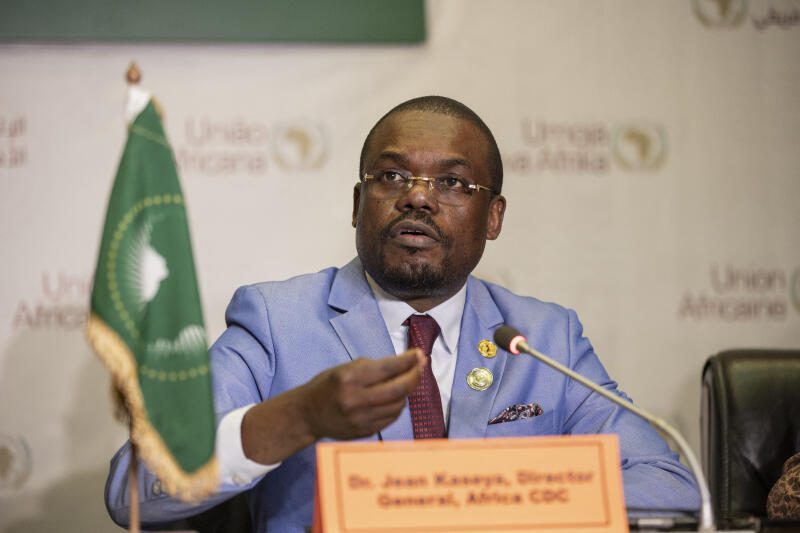On 13 August 2024, the Africa Centers for Disease Control and Prevention (CDC) declared the Mpox outbreak a Public Health Emergency of Continental Security (PHECS). This was a first for the organisation since its establishment in 2017. Due to the rapid spread of Mpox in Africa, the World Health Organization (WHO) joined the African agency in declaring it a Public Health Emergency of International Concern (PHEIC) two days later. And while WHO led the global public health response to the Covid-19 pandemic, this time the Africa CDC is solely leading the response to the Mpox outbreak, making this health crisis the first ever to be solely managed by the agency. This will have practical implications in three main areas: resource mobilisation, laboratory surveillance and risk information management at continental level. In other words, the credibility of Africa CDC is at stake.
The task ahead
Resource mobilisation mainly refers to financial, human, and technological resources. It is quite encouraging to see the diversity of institutions, including African ones, in the global panoply of partners that Africa CDC has. The task ahead requires adequate funding and no stone should be left unturned. On this note, the Africa CDC should expand its resource mobilisation strategy by partnering with African universities, banks, public health networks or associations and foundations, without overlooking the private sector. This step will not only anchor the agency’s continental presence but will also improve collaboration, preparedness, and timely action in times of crisis such as these.
The surveillance system is closely linked to resource mobilization. In particular, it refers to the provision of appropriate laboratory equipment to affected countries. It plays a vital role in rapid diagnosis and treatment, but more importantly in containment measures to limit the spread of fast-moving viral diseases. It is expected that the current outbreak will be better managed under the supervision of the African agency than the Ebola outbreak in 2014, when individual countries struggled to establish proper coordinated surveillance mechanisms.
Risk communication and community engagement (RCCE) is an important part of CDC’s mission in Africa because of its oversight responsibilities and the need to keep all stakeholders informed for better decision-making. In this way, Africa CDC acts as a glue between countries in health crisis situations. Probably the biggest challenge facing the agency is building trust between African countries, which can be achieved by ensuring continuous communication and involvement in decision-making with national health authorities and local partners, as well as participating in public education. In this regard, the Agency should be commended for already having a structure in place to define levels of public health crisis in advance to facilitate the appropriate response.
What you need to know
Although the origin of Mpox (formerly known as monkeypox) is unknown, it was discovered in 1958 following outbreaks in research monkey colonies in Copenhagen, Denmark. The first human case, a 9-month-old baby boy, was recorded in the Democratic Republic of Congo in 1970 during smallpox vaccination campaigns. Since then, several cases have been recorded throughout West and Central Africa. It is estimated that there are 2,000 cases a year, although data are inconclusive. In 2022, a global spread began in Europe and North America (a non-endemic area), where most of the reported cases were identified through sexual health or other health services in primary or secondary health care facilities. These cases mainly, but not exclusively, involved men who have sex with men. WHO and local health authorities helped to contain this spread.
The current outbreak has affected at least 13 African countries, with non-endemic East African countries such as Rwanda and Kenya reporting their first cases. The virus has two clades: the most lethal, clade 1, is endemic to Central Africa and clade 2 is mainly found in West Africa and was responsible for the 2022 outbreak in Europe.
Mpox is transmitted by physical contact with infected animals, people or materials. In addition to other viral symptoms, the main symptom is a rash that varies in severity and affects different parts of the body. The natural course of the disease can last up to 2-4 weeks and treatment includes supportive care and vaccination.
All eyes on Africa CDC
The Africa CDC is a promising platform. If all the cards are played right, it could be a game changer for health on the continent. In any case, the need for a continental body to coordinate Africa’s public health crises was highlighted by the Ebola outbreak in West Africa in 2014. What’s even more motivating today is the combination of training and technological activities that the Agency can organise, such as last year’s vaccine manufacturing practices. The potential benefits and collaborations that Africa CDC can bring to the continent are endless.
Indeed, the current situation will test the capacity of the Africa CDC to mobilise the necessary resources and challenge its surveillance and risk communication systems. This is an opportunity to fine-tune Africa’s capacity to manage major continental public health emergencies. The current Mpox outbreak will either expose the Africa CDC as an unreliable institution, or sharpen and mould its health crisis management skills to make it a pillar of global public health.



